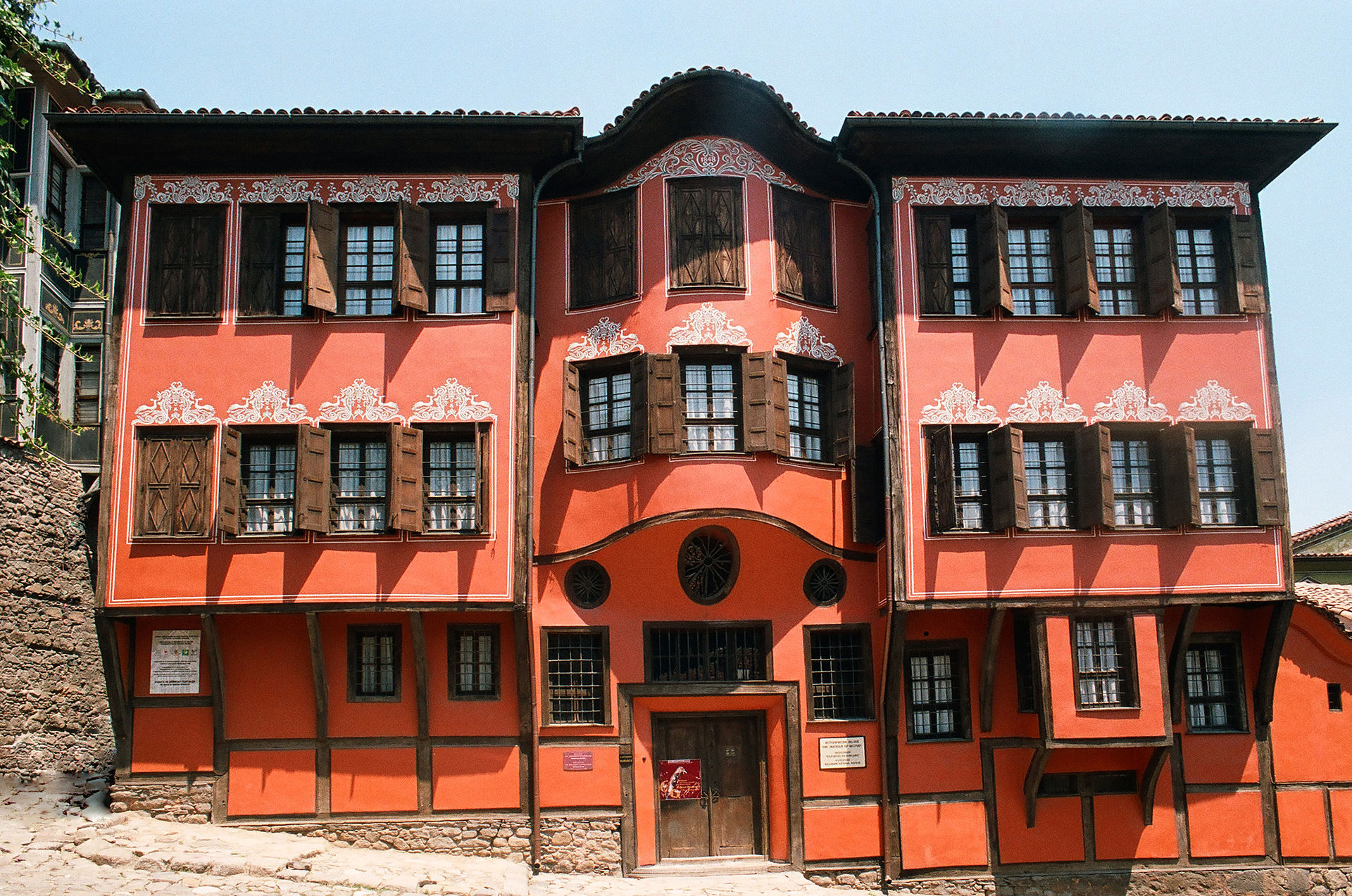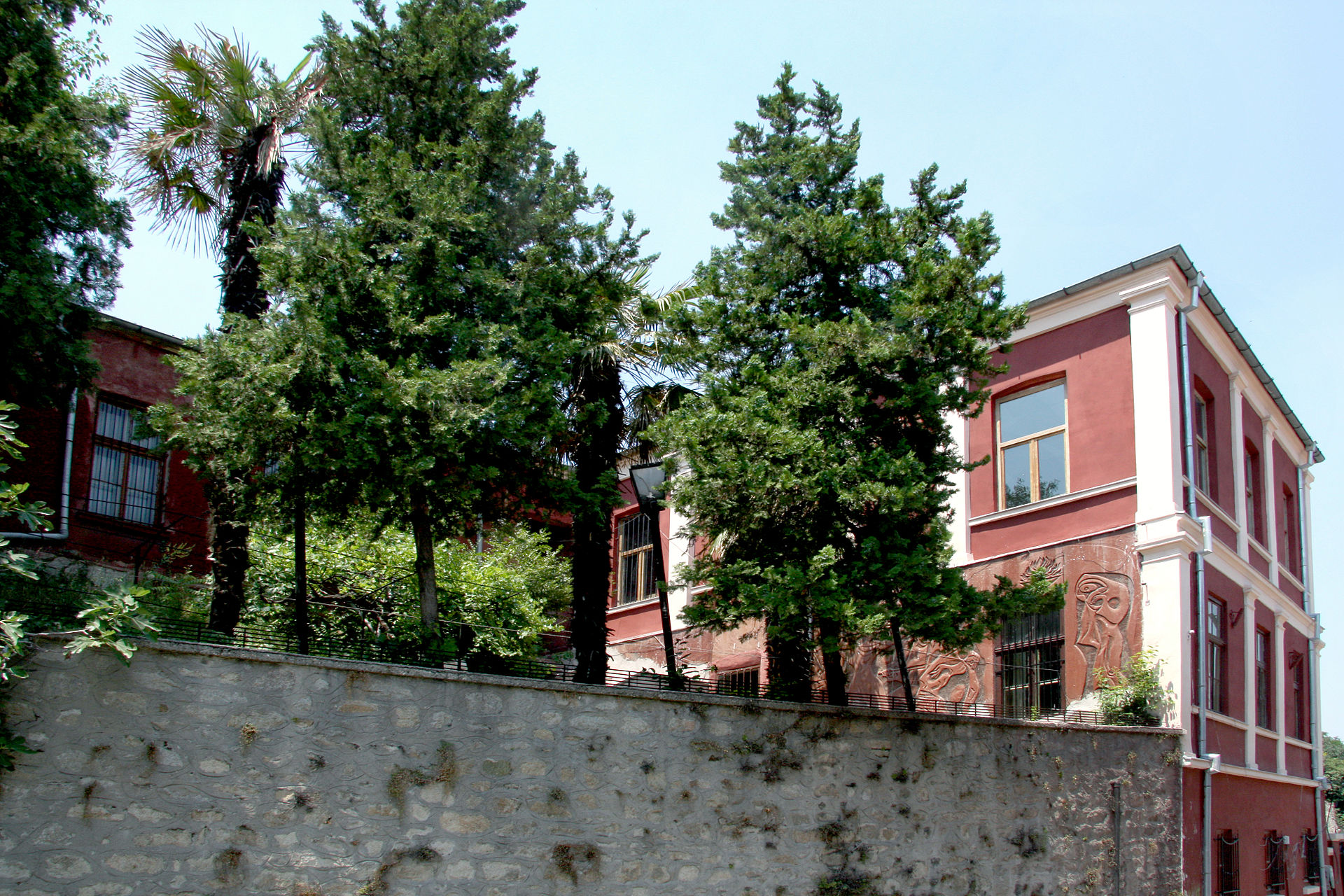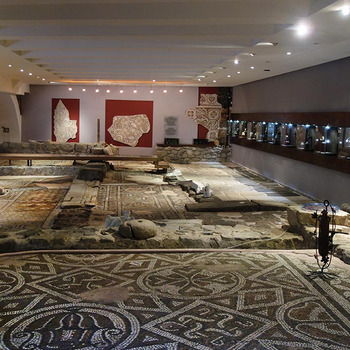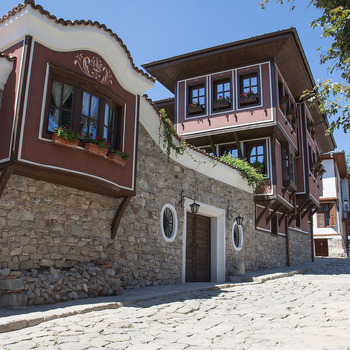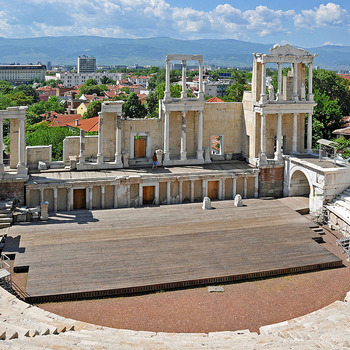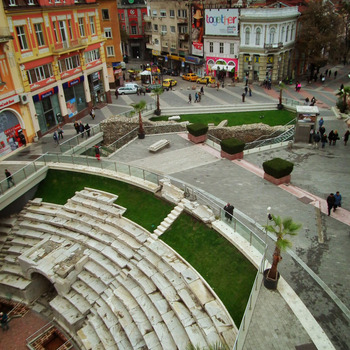Regional History Museum Plovdiv
Overview
The Regional History Museum in Plovdiv is the largest history museum in Plovdiv District and one of the largest museums in Bulgaria. Divided into four thematic exhibitions, each in a separate building related to the history of Plovdiv. The museum has some of the richest collections in Bulgaria.
The museum was founded in 1951 as a scientific and cultural organization for searching, studying, preserving and presenting the cultural values of the past of Plovdiv and the Plovdiv region for the period of 15-20 century.
Regional History Museum - Plovdiv has four exhibitions:
"Unification of Bulgaria 1885",
"Bulgarian Revival",
"Book publishing in Bulgaria in the second half of the 19th and the beginning of the 20th century", and
Museum Center for Contemporary History.
Exposition "Unification of Bulgaria"
The Saedinenie of Bulgaria exposition is located in the central administrative building of the museum at 1 Saedinenie Square, the authentic appearance of which has been preserved since its construction in 1885 to the present day.
The building was originally built to house the Regional Assembly of Eastern Rumelia. The designer of the building was the Italian architect Pietro Montani, and its construction continued from 1883 to 1885 under the direction of architect Oscar Leffe. In the center of the building there is a spacious parliamentary meeting room, and the side wings are intended for the administration. However, the building remained without its original purpose, when on September 6, 1885 the Union of Eastern Rumelia and the Principality of Bulgaria was proclaimed and Sofia became the capital of the united Bulgarian state.
In March 1886, by order of the Prime Minister Petko Karavelov, the building housed the Plovdiv National Library (now the Ivan Vazov National Library) and a museum. In 1895 the Plovdiv Chamber of Commerce and Industry was established in it, in 1912 the Society of South Bulgarian Artists was founded. The building is an architectural and historical monument of national importance.
The museum exposition "Unification of Bulgaria 1885" was opened in 1985 on the occasion of the celebration of the centenary of the Unification. The exhibition covers the period from the signing of the Berlin Treaty in 1878 to the Serbo-Bulgarian War in 1885. The main emphasis is on the construction and development of Eastern Rumelia as a second Bulgarian state, as well as the preparation and implementation of its Union with the Principality of Bulgaria.
In five exhibition halls there are original exhibits (personal belongings, seals, awards, cold steel and firearms), photos and documents of participants in the Union and the Serbo-Bulgarian War.
In 2017, a tubular body with 18 registers and 2 manuals, manufactured by Maag, Switzerland, was installed in the exhibition.
Exposition "Bulgarian Revival"
Georgiadi's house
The exhibition "Bulgarian Revival" is located in the house of Dimitar Georgiadi in the architectural and historical reserve "Ancient Plovdiv". Built in 1848 according to the popular 19th century architectural type of the Plovdiv symmetrical house, the building is a cultural monument of national importance. Around the spacious halls in the middle of each of its three floors are located symmetrically four rooms. The walls of the facades and inside the house are painted with geometric and floral ornaments, and the ceilings are skillfully carved.
The house was used until the middle of the 20th century, after which it was restored twice - in the early 1960s and in 2006 - 2007 (designed by the Japanese government and UNESCO). After the first restoration, in 1961 the museum exposition of the Regional Historical Museum - Plovdiv, dedicated to the Bulgarian Revival and the national liberation struggles, is located in it. The exhibition occupies eleven halls and two halls with a total area of 825 m2 without compromising the interior architecture of the house.
With rich material, documentary and photographic material, the exhibition traces the history of the city of Plovdiv from the 15th to the 19th century. In the halls on the first floor is presented the ethnic and economic condition of Plovdiv during the Ottoman era. On the second and third floors are presented the struggles for the new Bulgarian education, church independence and national liberation.
Exposition "Book publishing in Bulgaria in the second half of the 19th and the beginning of the 20th century"
The house of Hristo G. Danov
The exposition "Book Publishing in Bulgaria in the Second Half of the 19th and the Beginning of the 20th Century" is arranged in the home of the founder of modern Bulgarian book publishing, Hristo Gruev Danov. The house is a representative of the Bulgarian Revival architecture, the walls are painted, in some places decorative portrait painting is used, and the ceiling is decorated with a carved composition. The exposition shows the role of Plovdiv as a center of Bulgarian education and culture in the second half of the XIX and the beginning of the XX century. The stages in the development of the educational work and the activity of prominent writers and educators are traced. Among the exhibits there are unique samples of the printed Revival book, editions, textbooks, as well as household items, personal belongings and correspondence of Hristo Danov and his publishing house.
Museum Center for Contemporary History
The Museum Center for Contemporary History has a spacious, modernly equipped hall, which allows for the presentation of historical, artistic and photographic exhibitions, as well as for other public events. There is a permanent exhibition "The Soul of the Japanese Doll" - the fruit of cooperation between the Regional History Museum - Plovdiv and the Japanese Agency for Volunteers Abroad (JICA). From ancient times to the present day, the Japanese treat their dolls as living beings. Many of their usual holidays are connected with them. Five showcases located in a special corner show some of the most common sets of Japanese dolls, each created in the history of an old legend.
The museum has more than 60,000 exhibits, including unique collections of weapons and firearms, orders and medals, military equipment, personal belongings, printed publications, clothing and objects of urban life, photos and documents.
Recommended
• Regional Archaeological Museum - Plovdiv
• Regional Museum of Natural History - Plovdiv
• The old town of Plovdiv - an architectural reserve


 Bulgarian
Bulgarian Romanian
Romanian